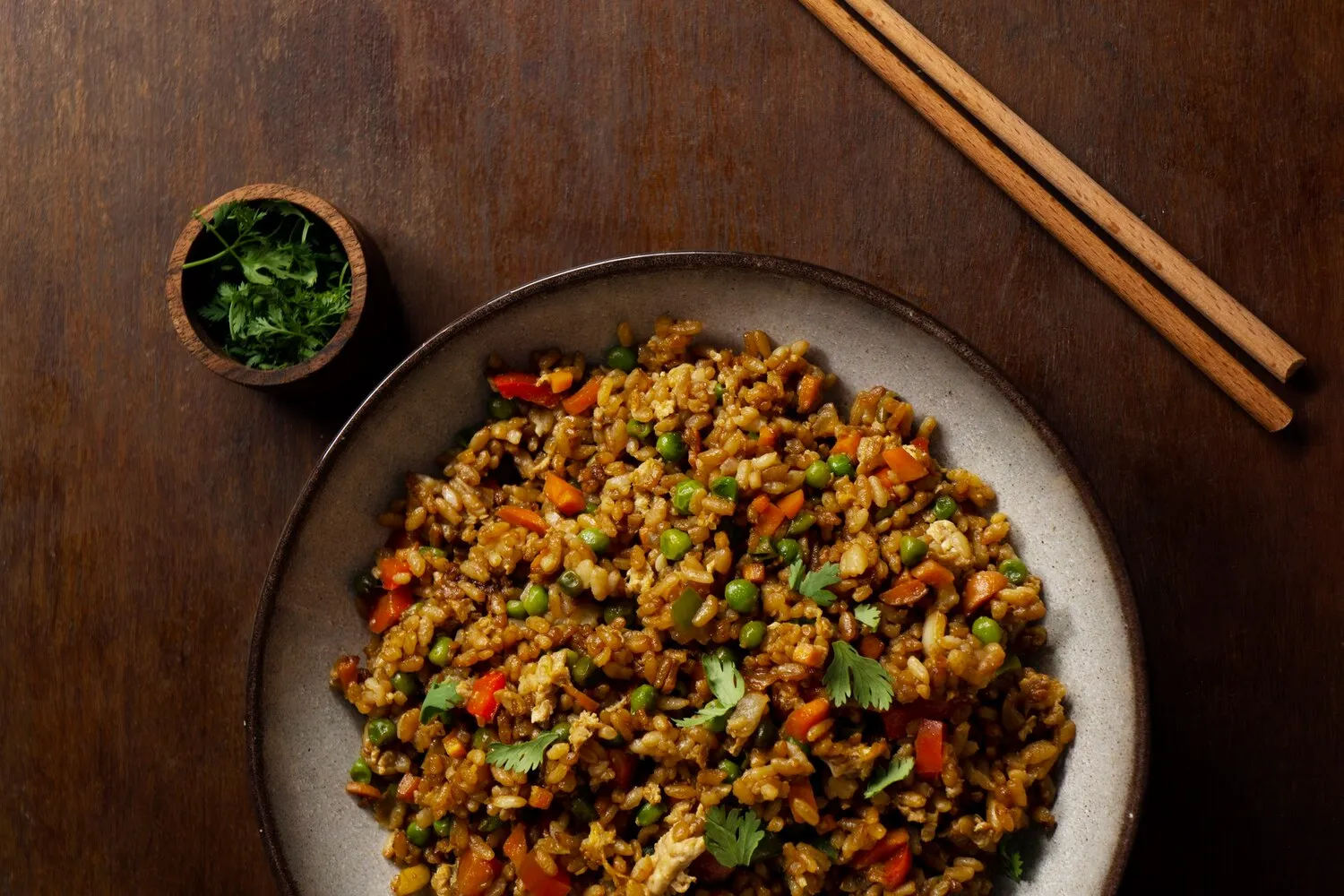
Fried Rice
Fried rice variations are a common offering and are frequently discussed in the reviews, suggesting popularity.
Nutrition Facts
* The % Daily Value (DV) tells you how much a nutrient in a serving of food contributes to a daily diet. 2,000 calories a day is used for general nutrition advice.
Global Fusion Bistro
Fried rice is believed to have originated in Sui Dynasty China (589–618 AD). It developed as a way to reuse leftover rice, preventing food waste. As Chinese cuisine spread, variations of fried rice became popular throughout Asia and beyond.
Fried rice holds a significant cultural position, particularly in Chinese cuisine and Asian communities globally. It represents resourcefulness, adaptability, and the importance of family meals.
Household Staple
Fried rice is a common homemade dish, utilizing leftovers and reflecting the practicality of Chinese cooking.
Restaurant Standard
It's a ubiquitous item on Chinese restaurant menus worldwide, demonstrating its popularity and versatility.
Celebration Food
Special fried rice dishes are sometimes prepared for celebrations, incorporating high-end ingredients to symbolize prosperity and good fortune.
The flavor profile of fried rice is a savory and umami-rich blend, often with hints of sweetness and spice. The exact flavors depend heavily on the ingredients used, but a balance of salty, savory, and subtly sweet is common.
Typically, fried rice features cooked rice (preferably day-old for best texture) stir-fried with ingredients like soy sauce, scrambled eggs, diced vegetables (carrots, peas, onions), and protein (pork, chicken, shrimp, or tofu). Sesame oil is often used for its distinct aroma and nutty flavor. Garlic, ginger, and scallions contribute aromatic depth. Variations may include ingredients like oyster sauce, chili paste, or curry powder for added complexity.
Use Day-Old Rice
Freshly cooked rice is too moist and will result in soggy fried rice. Day-old rice has less moisture and will fry up much better.
Hot Wok, High Heat
A hot wok and high heat are crucial for achieving the characteristic 'wok hei' or 'breath of the wok,' which imparts a smoky flavor.
Don't Overcrowd the Wok
Adding too much rice at once will lower the temperature of the wok and result in steamed, not fried, rice. Fry in batches if necessary.
Add Soy Sauce Last
Adding soy sauce at the end helps to prevent the rice from becoming too sticky and allows the flavors to meld properly.
Explore additional Fried Rice dishes and restaurants
Explore Fried RiceDiscover top dining spots and culinary experiences in Chestermere.
Explore ChestermereLearn more about the food culture, restaurant scene, and culinary heritage of Canada.
Explore Canada